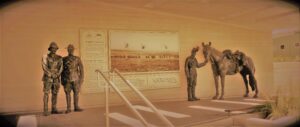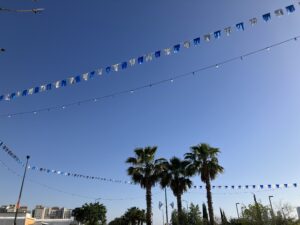We’ve read about Hezekiah, Menashe and the Kingdom of Judah in the Bible, but now archaeologists are digging up ancient treasures from the time they reigned in Jerusalem! Just outside the old city, close to the US embassy, yet more evidence of the Kingdom of Judah is being discovered.
“This is one of the most significant discoveries from the period of the Kings in Jerusalem made in recent years. At the site we excavated, there are signs that governmental activity managed and distributed food supplies not only for shortage but administered agricultural surplus amassing commodities and wealth,” said excavation co-directors Sapir and Nathan Ben-Ari in a press release.
Ancient administrative center discovered
Dr. Yuval Baruch of the Israel Antiquities Authority explains:
“The archaeological discoveries at Arnona identify the site as a key site — the most important in the history of the final days of the Kingdom of Judah and of the return to Zion decades after the destruction of the Kingdom. This site joins a number of other key sites uncovered in the area of Jerusalem which were connected to the centralized administrative system of the Kingdom of Judah from its peak until its destruction.” 1
The find is exceptional in terms of both its size and architectural style, according to Sapir, one of the directors of the excavation. The archaeologists say the site is dated to the time during the reigns of Judean kings Hezekiah and Menashe (8th century to the middle of the 7th century BC), which included Assyrian King Sennacherib’s failed campaign to conquer Jerusalem in the days of King Hezekiah.
Among the discoveries are hundreds of seals imprinted onto the handles of clay vessels used to store foodstuffs and liquid. The lettering on the seals (למלך) shows that they pertained to the monarch, and were given by means of taxation or tithing as part of a huge administrative complex. It seems that extensive systems to collect and distribute food and provisions were well established and able to serve a wide area, and continued uninterrupted by the military troubles facing Judah at that time.
However, signs of the imminent downfall of the Kingdom of Judah and the reasons for it are also abundant: plentiful evidence of idol worship and paganism has been found littered throughout the area, showing how far the people had strayed from God.
“Some of the figurines are designed in the form of women, horse riders or as animals. These figurines are usually interpreted as objects used in pagan worship and idolatry — a phenomenon, which according to the Bible, was prevalent in the Kingdom of Judah.” (Sapir and Ben-Ari, IAA)
It was not long after this period that Jerusalem was destroyed and the people banished into exile.
Seals and signs
The finds have been brought to light in the three-week season of ‘Dire Straits‘ in the Jewish calendar, which culminates on the 9th day of Av (Tisha B’Av) when the temple was destroyed by the Babylonians.
Curiously enough, this was not the first time that significant archaeological finds relevant to the destruction of Jerusalem have been made at this auspicious time. Back in 2017, evidence of the Babylonian destruction of the holy city was discovered just around the time of Tisha B’Av. According to Jewish tradition, the two temples were destroyed because of the lack of brotherly love and what they call “baseless hatred” between the people of God.
This apparent coincidence reminds us of the importance of loving one another while shunning hatred, and of making sure we have God as our top priority, shunning any idols that may try to take His place in our lives. Now in 2020 the people of Israel are back in the land and Jerusalem is back in the hands of the Jewish people. However, it is sobering to be digging up evidence of a thriving kingdom overthrown because of our persistent sin generations ago. May it be a sign and a witness to all who can hear and understand.
Archaeologists Uncover Evidence of the Babylonian Destruction of Jerusalem
- Times of Israel, Huge Kingdom of Judah Government Complex Found Stone’s Throw from US Embassy, Amanda Borschel-Dan, 22 July 2020,
















